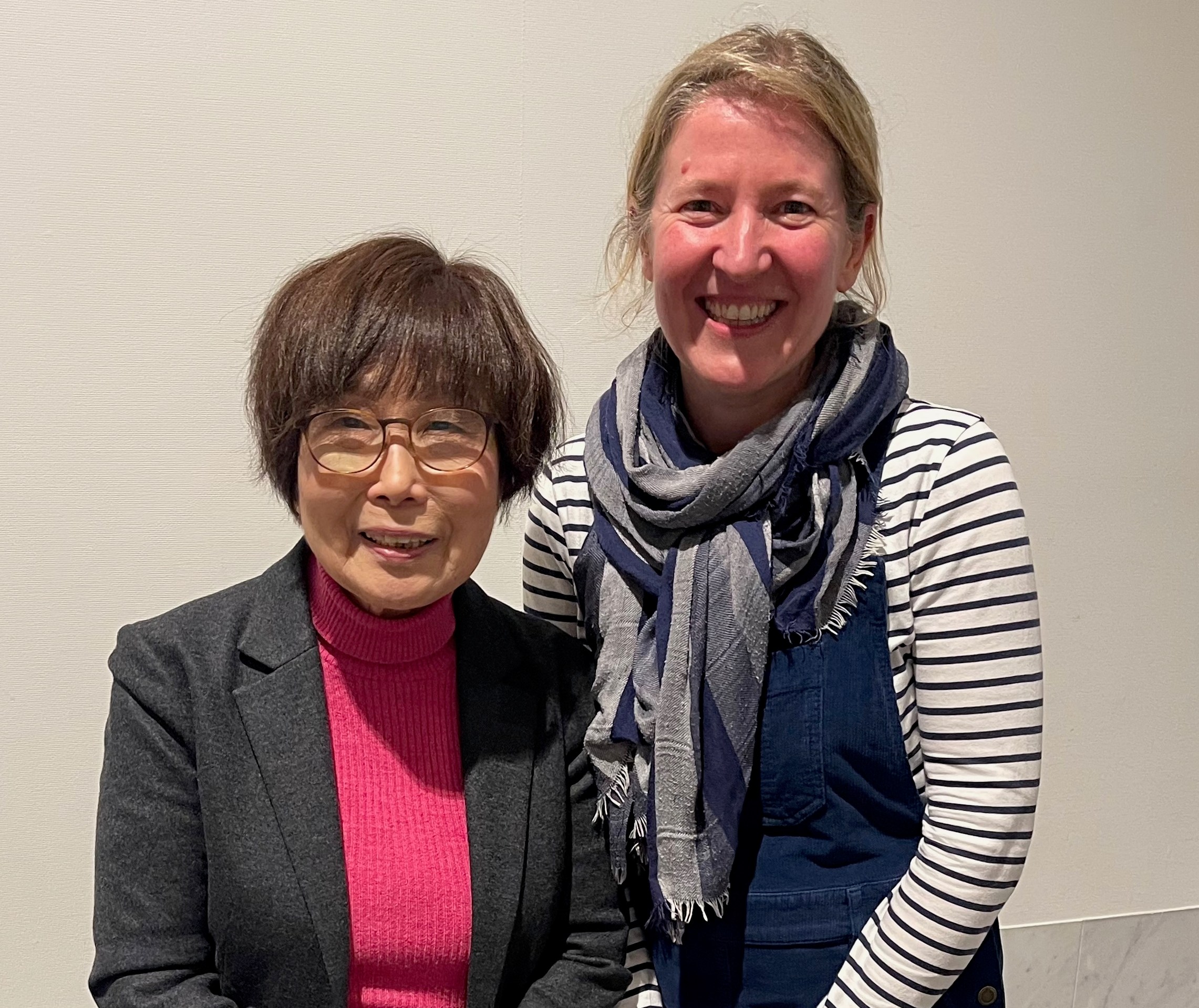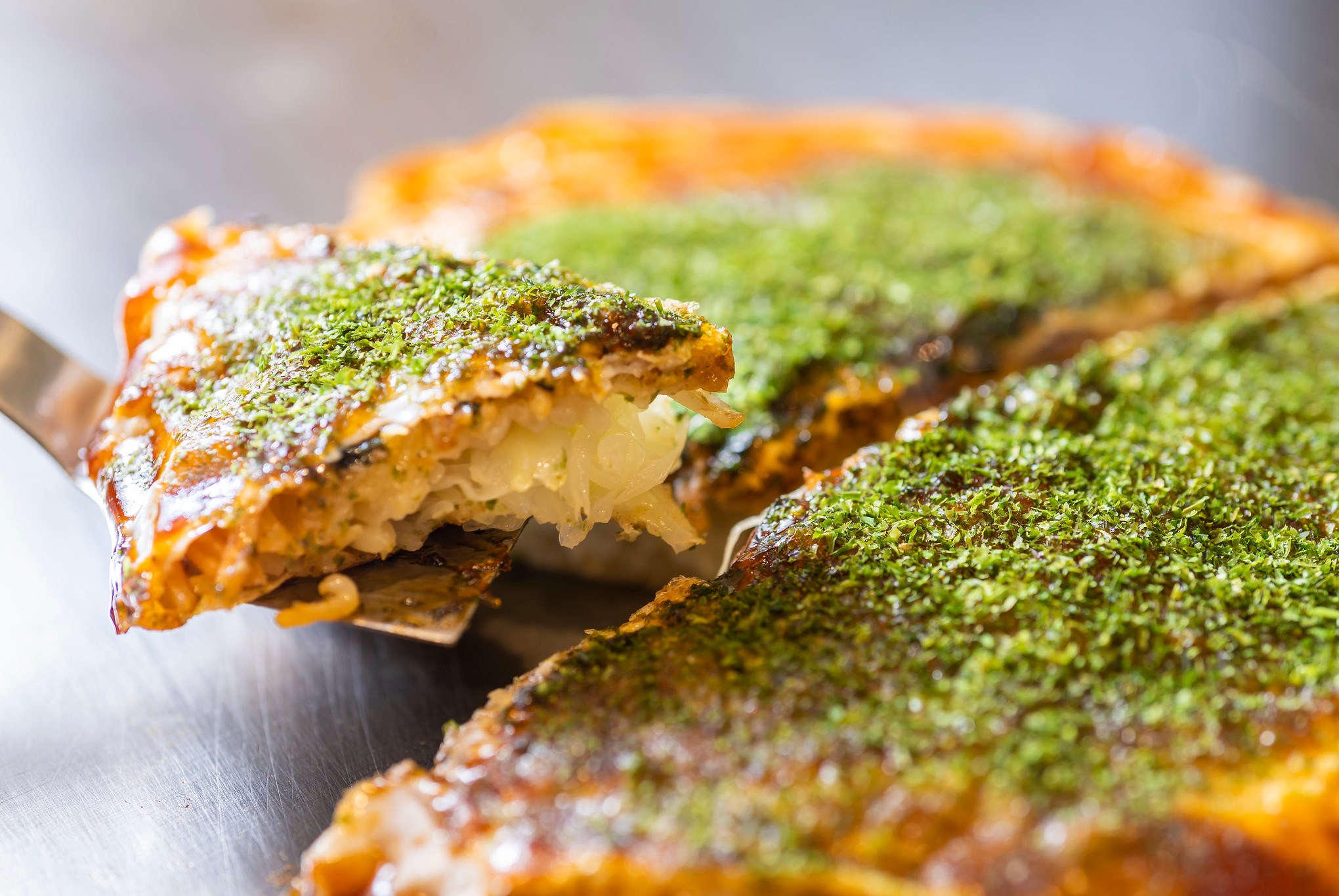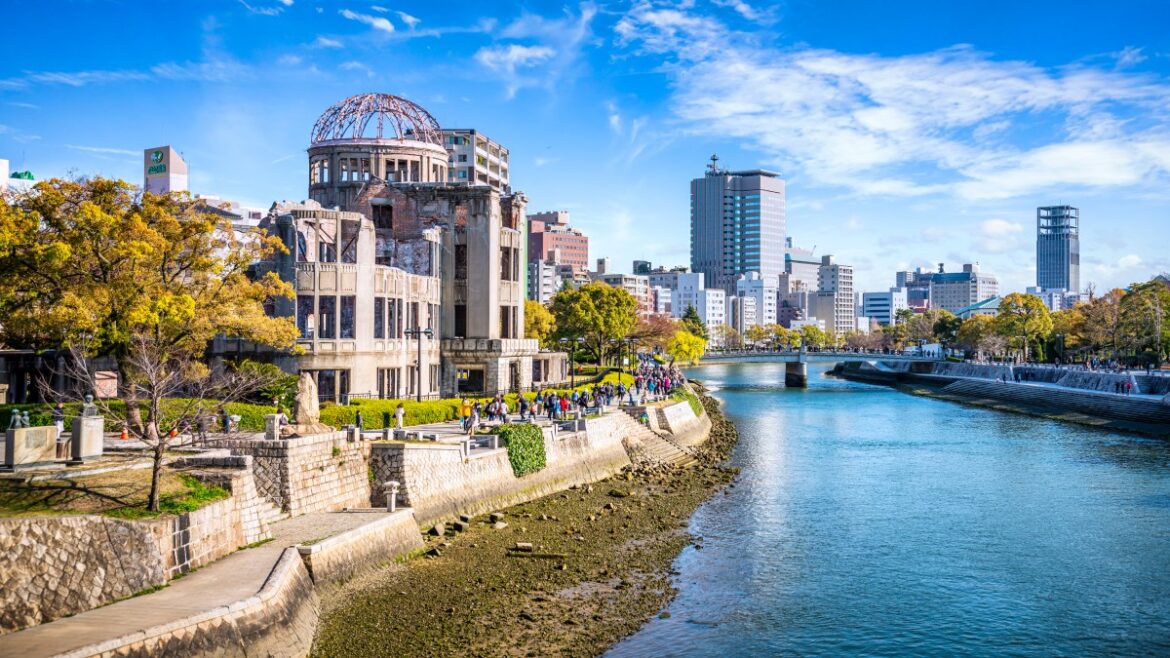“Those days, Nakajima was a very happy place – with markets, restaurants and even a movie theatre,” says Keiko Ogura, 87, fondly recalling a neighbourhood close to her childhood home in Hiroshima. These days the place of Ogura’s memory is known worldwide. But Nakajima no longer resembles the bustling commercial district it once was.
Now the 30-acre wedge of land between the Motoyasu and Honkawa rivers is the Hiroshima City Peace Memorial Park, laid down in 1955 to mark the destruction caused by the world’s first atomic bomb. It targeted the T-shaped Aioi Bridge just to the north, destroying almost everything within a one-and-half-mile radius and killing 80,000 people instantly. Today the Peace Park is visited annually by 720,000 overseas travellers who, like myself, have come to learn more about the bombing and its legacy and pay our respects. For me, the visit is also a chance to explore the contemporary city beyond its tragic past, including its vibrant food scene, and the wider Hiroshima region.
“My memory is so clear and, while I have a clear memory, I want people to hear my story,” Ogura tells me when I arrive to meet her in a private room at the Hiroshima Peace Memorial Museum. There is a steeliness in her gentle voice. Ogura is a hibakusha — an atomic bomb survivor. She was just eight years old when the “Little Boy” was dropped on Hiroshima at 8.15am on August 6, 1945.
Ogura has agreed to meet me during my few days in Hiroshima to share her first-hand account of the bombing and its aftermath. She is the founder of Hiroshima Interpreters for Peace (HIP), an activist group that “tells the facts of Hiroshima to the world” — including to travellers interested in gaining a deeper understanding of what happened.

The Hiroshima City Peace Memorial Park marks the site of the first atomic bomb that was dropped on the city
ALAMY
The weighty privilege of meeting Ogura is underscored by our location: the Hiroshima Peace Memorial Museum, which houses a necessarily shocking collection of personal stories and artefacts about the bombing in Kenzo Tange’s unadorned modernist building.
Ogura pulls up a map on her PowerPoint presentation. “We couldn’t make our own bomb shelter in the city centre so my father was worried,” she explains. By August 1945 most Japanese cities had been heavily bombed, and Hiroshima residents had become used to the sound of American bombers and reconnaissance aircraft regularly flying over. Recognising that Hiroshima — a military city — would eventually be targeted, Ogura’s father wanted to build his family an air-raid shelter. “So we moved here, to Ushita.” She points to a suburb a mile and a half from their former home in the city centre, beyond the sacred Mount Futaba, the location of many temples and shrines. It was a decision that saved their lives.
“There was a strong flash and a blast,” she says. “Then everything started to burn.” She recalls lying on the road beside her partially collapsed home. “I couldn’t breathe.” But Ogura was alive, as were her immediate family — Mount Futaba had shielded their neighbourhood from the full force of the bomb. But death was all around her, inescapable.
“I lived near a shrine, and people rushed there to seek help. So many people died in front of me. My father cremated bodies every day — over 700 victims,” she says, recalling the terrible smell of burning that permeated the city air. “Those were my childhood memories; that is the reality of nuclear weapons.”
Ogura carried her “invisible scars” silently into her forties, when she was persuaded to start speaking publicly — adamant that by sharing her first-hand account she could encourage people to take action to prevent a repeat (an undertaking that perhaps now seems more critical than ever). Her testimony is disarmingly frank, yet told with warmth and not a hint of pity or anger. “There are not so many witnesses left; I want to tell my story until the last moment.”

Keiko Ogura with Kate Crockett
Two hours later I emerge into the Peace Park, which is full of trees and shrubs donated by regions across Japan. Ogura’s story is overwhelming and I am relieved that I have an unscheduled afternoon ahead to slowly take it all in. I wander between the stone monuments, such as the Flame of Peace and the Children’s Peace Monument, topped with the statue of an origami crane and tragic 12-year-old Sadako, a local child who folded thousands of these enduring symbols of peace during her battle with leukaemia caused by the atomic radiation. Close by the graceful arching cenotaph contains books listing the names of the 344,306 victims within the radius of the hypocentre, with new names to be added during this year’s 80th anniversary commemorations, as hibakusha pass away.
It’s a reminder that life presses on, and that Hiroshima moves ceaselessly like any other city. The Hiroden streetcar trundles commuters past the A-Bomb Dome — the shell of the former Hiroshima Prefectural Industrial Promotion Hall that is a symbol of the city — and modern buildings surround the Unesco world heritage site. A new 28,520-seat football stadium has just opened nearby, alongside an events spot with cafés, shops and a grooming parlour selling bentos for dogs.
• Read our full guide to Japan
That evening I walk from the Hilton Hiroshima — my excellent hotel base with mountain and sea views where President Biden stayed during the 2023 G7 summit — to the Hondori central entertainment area. Here teens linger late around soft-serve ice-cream stands and clothes shops such as Uniqlo, which opened its first store in Hiroshima in 1984. At the Golden Garden bar I try deep-fried oysters from the Seto Inland Sea, washed down with fragrant Teagarmot Journey IPA by Hiroshima Neighborly Brewing, a star on the city’s craft beer scene (@goldengarden_beer).
It’s the warm-up for the main event: okonomiyaki, Hiroshima’s ubiquitous savoury pancake. On a recommendation from the hotel concierge I take a counter seat at the family-run Henkutsuya Horikawa and watch as the owner cooks up crêpes, cabbage, pork and soba noodles in a tightly choreographed dance at the teppan. The layers are piled up, flipped and topped with a fried egg and tangy okonomiyaki sauce, and the whole thing is slid over, piping hot and tasty (mains from £4; 2-20 Nagarekawacho).

Okonomiyaki is a type of savoury pancake
HIROSHIMA TOURISM ASSOCIATION
The next morning I walk with Joy Jarman-Walsh, who has been a Hiroshima resident for 30 years. She reveals that okonomiyaki has roots in the postwar city, when destitute war widows sold simple pancakes with cabbage and American flour to survive. “They cooked in the street on metal scavenged from ships in Hiroshima port,” she says.
Close to the port we visit one of the few remaining “survivor” buildings — a thick, red-brick warehouse that, like the concrete A-Bomb Dome, managed to withstand the atomic blast. Its warped metal shutters reveal the force of the bomb, 1.6 miles way from the hypocentre. Activists hope that the empty former army clothing depot will be spared demolition and redeveloped as an extension to the busy Peace Museum and as a creative arts venue.
“Hiroshima can get really busy with day-trippers from Kyoto and Osaka,” Jarman-Walsh says — the two cities are about an hour and 40 minutes east by bullet train. “It would be great to see people staying overnight and exploring beyond the Peace Park and Miyajima,” she adds, referring to the island south of Hiroshima famed for its incredibly picturesque red “floating” torii gateway to the Itsukushima Shrine — another Unesco world heritage site.
With its photogenic views and cute deer (often seen on the beach in front of the red torii gate), Miyajima is beautiful but over-touristed. It is the best-known tourist attraction of the Seto Inland Sea, closely followed by the so-called Art Islands — including Naoshima, home of Yayoi Kusama’s giant spotty pumpkin — almost 125 miles to the east and which have helped to put the region on the map in recent years.
• 16 of the best Japan tours
It’s a real contrast to the quiet stops on the slow rail route running east along the Inland Sea coast — my next direction of travel as I delve deeper into the region. I ride the train for two hours, watching forested islands drift past in a blue haze, the calm waters interspersed with oyster farms and faded shipbuilding towns such as Kure, where the Second World War battleship Yamato — the largest ever constructed — was built. Slowly but surely the trains grow shorter and emptier.
I disembark in the former salt-trading town of Takehara to explore its preserved Edo-period (1603-1868) townscape. It’s disarmingly quiet as I stroll through alleyways lined with wooden houses, earthen walls and intricate bamboo latticework. This is what the Japanese call inaka — the countryside. And that evening, as I cross onto the island of Ikuchijima, I am deep in inaka. My destination is Azumi Setoda, a 22-room contemporary ryokan housed in the grand former residence of the Horiuchi family, the wealthiest salt traders in Setoda town. It’s a sought-after property, created by Adrian Zecha, the visionary founder of Aman Resorts.

The quiet town of Takehara in the Japanese countryside was once a salt-trading destination
SHUTTERSTOCK
I check into my 50 sq ft room, with its futon bed, wooden panelling and pocket garden concealed behind elegant yuki-mi — snow-viewing screens — that slide up and down instead of sideways. There is time for a bath. The deep Japanese cypress (hinoki) soaking tub looks inviting, but instead I head across the road to the public bathhouse (sento), which has been renovated by the hotel for guests and locals; for the latter, a sento visit remains a daily ritual.
That evening a fantastic multi-course meal is served beneath a lattice of ancient beams inside Azumi Setoda’s lofty main building, presented on antique Kyushu pottery once owned by the Horiuchi family. The chef Kenya Akita’s menu uses produce from a 30-mile radius (including Inland Sea fish and vegetables from his garden), with dishes such as octopus bisque and sea bream carpaccio.
The elevated, Japanese-style hospitality, known as omotenashi, is highly personalised and reason enough to seek out Azumi Setoda, but so too is the chance to become immersed in rural life: picking citrus fruits, fishing and sailing. I seize the chance to borrow a hotel bike and cycle through lemon groves along part of the Shimanami Kaido, a 37-mile purpose-built bike route that connects Honshu with Shikoku via islands in the Inland Sea.
• 14 of the best places to visit in Japan
Before I depart Azumi Setoda I take a walk with the hotel’s guide, Julian Rodriguez, who has weaved together an illuminating history of life in this once-vital port, in part by listening to the stories of local octogenarians. There’s the stone lantern lighthouse that guided ships through narrow rapids, the island-hopping library boat and the overgrown sauna-like “stone bath” caves once used by locals.
There are “sketch points” marking the exact spots where the local watercolour artist Ikuo Hirayama painted scenes of Setoda. One such view is of the vermillion Kojoji pagoda, built by Buddhist monks who outgrew their monastery on the mainland 600 years ago — now designated an official “National Treasure”.

Azumi Setoda has 22 wood-panelled rooms
I think back to my time with Ogura. “When I tell my story I see people’s faces and I let them think,” she said. “I show them the direction; I want them to decide to do something.”
For me, that is to pass on the message that Hiroshima is a place of compelling stories and friendly, open people eager to share them. I urge you to visit, to listen and make a life-affirming connection to authentic Japan.
Kate Crockett was a guest of Hiroshima Tourism Association (dive-hiroshima.com) and InsideJapan Tours, which has nine nights’ B&B with stays in Kyoto, Osaka and Hiroshima from £4,273pp, including all domestic transport, some private guiding and activities (insidejapantours.com). Fly to Tokyo or Osaka
Have you visited Hiroshima? Share your memories in the comments


AloJapan.com